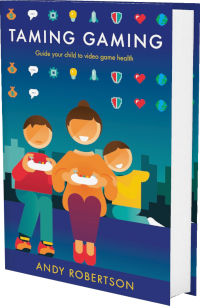 Android
Android iOS
iOS Mac
Mac Switch
Switch Wii
Wii Wii U
Wii U PC
PC PS4
PS4 PS5
PS5 Xbox One
Xbox One Xbox X|S
Xbox X|SWe've documented 48 accessibility features for The Last Of Us Part II, including Fully Voiced (Or No Speech), Large Subtitles, Large Text, Low Pressure and No Quick Reactions. Its accessibility is strongest in Controls and Getting Started but it also has features in Visual, Reading, Navigation, Difficulty and Audio to reduce unintended barriers.
This report is created with input from accessibility experts and the player community to help people find games that have the accessibility features they require. Once you have found potential games on the database, there are excellent specialist accessibility sites that offer in-depth reviews to guide your purchasing decisions.
Our accessibility examiner, Andy Robertson, first checked The Last Of Us Part II accessibility 2 years ago. It was re-examined by Andy Robertson and updated 20 months ago.
 Accessibility Notes
Accessibility Notes
The game has been widely praised for these features and even includes settings to specify whether it's easier for you to hold the controller upside-down or sideways, which rotates the directional buttons, left stick, and right stick to match.
You can play with one stick and certain actions can be automatically done for you, for example, auto-pick items, walking through gaps, jumping. The biggest issue is having to shake the controller to recharge your flashlight, it can be remapped to a touchpad swipe. You can use gyro controls to assist aiming.
For sightless onboarding, narration is on by default if Text To Speach has been turned on in the console settings.
 Game Details
Game Details
Release Date: 19/06/2020
Price: 67% off
Out Now: PS4
Skill Rating: 16+ year-olds
Players: 1
Genres: Action, Adventure (Collecting, Fighting, Narrative, Role-Play, Shooting, Stealth and Traversal)
Accessibility: 48 features
Components: 3D Third-Person and Day and Night
Developer: Naughty Dog (@Naughty_Dog)
Costs: Purchase cost
 Controls
Controls
We've documented 12 accessibility features for Controls in The Last Of Us Part II which deal with how you control the game, different options for alternative inputs and whether you can remap these settings to suit your needs.
Gamepad
Can play with the following:
Multiple Buttons & Single Stick: Can play with multiple buttons and a stick.
Multiple Buttons & Two Sticks: Can play with multiple buttons and two sticks.
Motion
Games that can be played with different sorts of motion controllers.
Motion Aiming: Can use small movements of the gamepad to fine-tune aiming or as the main aiming mechanism. This is sometimes known as Gyro-Aiming. This usually provides the ability to calibrate these controls to taste.
Motion Gesture: Can motion with the controller to direct an in-game action. This can be a one-to-one motion for analogue sword or camera movement. It can also be a simple shake to trigger a one-off action. This is sometimes known as Waggle or Shake controls, as popularised by the Wii.
Remap Controls
Can customise the controls for the game as follows:
Remap Buttons: Can re-map all buttons so that you can use alternatives that better suit your play.
Swap Sticks: Can swap the sticks over so that you can use the opposite sticks to control the game.
Invert X/Y Axis: Can invert the direction required to control looking and aiming. This enables you to match your instinctive orientation when looking.
Button Combinations
Specific button operation required to play
Holding Down Buttons Optional: Holding down buttons for prolonged periods (a second or more) is not required or can be switched to toggling the action on and off. This is in addition to the movement stick/button which is not considered a hold for this purpose.
Rapid Repeated Pressing Optional: Quick, repeated button pressing (more than 2 times a second) is not required, can be skipped or switched to holding a button to trigger a repeated action.
Controller Vibration
Vibration Optional: Controller vibration not used in the game or you can disable it.
Informative Vibration: Controller vibration indicates events or interactions in the game, echoing visual and audio cues. This can provide additional information about progress, approaching enemies or hitting a target.
Sensitivity
You can adjust
Adjust Mouse/Stick/Touch Sensitivity, Deadzones and Thresholds: Adjust how sensitive touch/mouse/stick controls are and the related deadzones and thresholds.
Similar Games With More Accessibility Features for Controls
If you want to play The Last Of Us Part II, but it doesn't offer the Controls accessibility features you require, this similar game extends the Controls accessibility:
- God of War Ragnarök (13 Controls Features)
 Difficulty
Difficulty
We've documented 3 accessibility features for Difficulty in The Last Of Us Part II which deal with how you can adjust the challenge of play, and whether this is locked once chosen or can be adjusted as you play.
Difficulty Options
Select Difficulty: Select the level of difficulty from a range of presets. This not only offers a way to adjust the challenge of a game but enables you to do so without dealing with individual criteria.
Customise Difficulty: Customise different aspects of the game to create a challenge of an appropriate level. Adjusting elements individually enables you to tailor gameplay to suit your needs and style of play.
Adjust After Setting
Adjustable Anytime: You can adjust the difficulty while playing, without having to restart the level you are on. This enables you to quickly adjust the game to suit your needs and see the difference immediately.
 Getting Started
Getting Started
We've documented 11 accessibility features for Getting Started in The Last Of Us Part II which deal with what support is offered to get started with the game. This includes customising the experience when you first open the game via any onboarding processes it provides as well as tutorials and other assistance when you first start playing.
Onboarding Before Play
Before you are presented with the home screen, onboarding settings aim to aid you accessing the menus you need to adjust the game to your requirements. They can also provide an easier way of turning on important adjustments without digging through menus.
Onboarding: The first time you open the game, you are asked to confirm options for control, navigation and accessibility settings. Games can differ in what they present at this stage, but will count for this, provided they include a streamlined onboarding process.
Sightless Onboarding: For games playable without sight, the first time you open the game, all menu options and explanations are narrated by default and menus are controlled via a button or stick presses rather than an analogue cursor. This enables blind players without sight to get ready to play.
Low Vision Onboarding: The first time you open the game, the default text is high contrast and font size is at least 1/20 (46 pixels on 1080 screen) the height of the screen and in an easy to read font. This enables legally blind visually impaired players to get ready to play.
Assistance Getting Starting
These features aid your play of the game in terms of cognitive load on learning controls, dealing with pressure and coping with the environment and challenges.
Tutorials: There are helpful tutorials and instructions on how to play. Information is provided in a timely manner, with appropriate level of detail.
View Control Mapping: You can view a map of controls during play. This clearly displays the mappings of actions to buttons/keys/mouse/keyboard without having to leave the game. This includes games that always display buttons to press during play.
Assistance With Controls: The game can automatically assist with aiming, steering, reloading, jumping, running etc. This reduces the challenge of certain aspects of play to remove barriers and make control of characters more accessible.
Reaction-Time Not Critical: Individual game actions don’t need quick reactions, or there are settings to lower the requirement for quick reactions. This means you don't need to quickly press a button in response to an on-screen prompt, target a fast-moving target or skillfully complete a scenario against the clock.
Low Pressure: Game tasks aren't time-limited or there's a low-pressure mode. This avoids the pressure of being put on the clock for overarching missions, or failing tasks because you didn't reach a destination in time.
Assistance For Progressing
These features aid your progress through the game offering different ways of maintaining your progression.
Bank Progress With Frequent Checkpoints: If you fail you can retry that level or aspect of the game without losing a lot of progress (less than 5 minutes). This is often provided via Frequent Checkpoints combined with restarting without losing time, equipment or score.
Assisted Progress With Hints: The game notices if you get stuck (or you can press a button) and provides information to help you progress. This can offer hints or tutorials popping up during play. This includes hints after you have died, where it can suggest strategies or difficulty settings to adjust or offer to skip past problematic levels.
Save Progress Anytime: The game automatically saves progress or you can save any time. This doesn’t mean you never lose progress, but it does mean you can stop whenever you want (without having to get to a save point) without losing progress.
 Reading
Reading
We've documented 7 accessibility features for Reading in The Last Of Us Part II which deal with how much reading or listening comprehension is required, how well the game provides visual and audible access to the text and whether subtitles and captions are a good fit for purpose.
Reading Level
How much reading is required to play the game's main path or story and how complex the language is. The presence of voiced characters doesn't reduce this requirement, as it's recorded as a separate datapoint.
Moderate Reading: Moderate reading required. The quantity and complexity of reading are at a level that a high school student (14-year-old) would appreciate.
Text Visibility
Large Clear Text: All essential text is large and clear or can be adjusted to be. The general text used throughout the game in menus, instructions and other key information (excluding subtitles that are assessed separately) is at least 1/20 (46 pixels on 1080 screen) the height on landscape screens and at least 1/40 height on portrait screens. We base this on the full line-height, including the space above and below the letters.
High Contrast Text: Text colour contrasts to the background or can be adjusted to be. The text in menus, instructions and other information is presented in high contrast with a solid background.
Subtitles
Large Clear Subtitles: Subtitles are large, clear and of good contrast. They are at least 1/20 (46 pixels on 1080 screen) the height of a landscape screen and at least 1/40 height on portrait screens, or can be adjusted to be. We base this on the full line-height, including the space above and below the letters. Considered separately from the general text of the game, the subtitles are large, clear and of good contrast.
All Speech Subtitled (Or No Speech In Game): All spoken content has subtitles, or there is no speech in the game. This means there is no requirement to hear spoken dialogue or narrative to play the game.
Captions
Speaker Indicator and their Tone: Textual captions indicate who is speaking and their tone (or there is only ever one person speaking). This can also be indicated visually in the game with character icons or character expressions with text in speech bubbles next to the person speaking.
Voice Acted
All Dialogue is Voice Acted (Or No Speech In Game): All of the game dialogue and narrative can be voiced, or there is no speech in the game. This means there is no requirement to read the dialogue and narrative text to play the game.
 Navigation
Navigation
We've documented 6 accessibility features for Navigation in The Last Of Us Part II which deal with how the game provides guidance and assistance to navigate its worlds. These are only for games that have traversal and exploration in 2D and 3D spaces.
Clarity
Large Clear Navigation: The in-game navigation and maps are clear to read. They offer large text and offer markers that are large and of high contrast. Where text or information is small, there are settings to zoom-in and increase visibility.
Visual Directional Cues: Additional in-game visual cues that signpost where to go next and how close you are to arriving. This can be with camera movement to focus on your destination or important items. It can use light, breadcrumb trails, in-world pointers to identify your mission's target location.
Audible Directional Cues: Additional in-game audio cues that indicate where to go next and how close you are to arriving. This is offered as a sonar-style ping with positional/stereo audio and volume to guide you in the right direction. This is useful for blind players.
Head-Up Display
Head-Up Display Navigation: Indication of where to go next with overlaid arrows, minimaps and waypoint markers. This supplements in-game visual and audible cues with additional guidance about where you are and where you need to go.
Adjust Head-Up Display: Resize and adjust the content of the head-up display. This enables it to be made more visible. It can also enable the removal of too much information that can be distracting or confusing.
Menu Navigation
Menu Narrated: All of the game menus can be narrated for easier navigation. The game menus can therefore be navigated without reading text.
Similar Games With More Accessibility Features for Navigation
If you want to play The Last Of Us Part II, but it doesn't offer the Navigation accessibility features you require, these similar games extend the Navigation accessibility:
- God of War Ragnarök (11 Navigation Features)
- Redfall (9 Navigation Features)
- Days Gone (7 Navigation Features)
 Visual
Visual
We've documented 8 accessibility features for Visual in The Last Of Us Part II which deal with how you can adjust the visuals to suit your needs, and offer additional information if you can't hear the game.
Contrast
High Contrast: There is high contrast between elements that need to be distinguished from each other, such as characters, interactive objects and game environment, either by default or a high contrast mode. This is different to a slider that increases contrast or brightness between light and dark.
Interactive Elements
Large Game Elements: Game characters and other elements are large and distinguishable. Enemies and player characters are at least 1/6 of the height of the screen. Or there is a zoom feature to make them larger.
Outline Interactive Elements: Characters, platforms and enemies can be outlined or highlighted for visibility. This can be with a large border around the character or a special visual mode that adjust the colour to make characters more visible.
Visual Distractions
No Flashes: No flashing strobe effects or you can disable them. This includes the absence of flashing from dramatic visual effects, explosions or weather effects like lightning.
Audio Cues for Visual Events
Audio Cues for Visual Events: Audio is provided to indicate visual events. Game events or progress highlighted by visual icons, effects or animations are also accompanied by audio to signify that progress. This is useful for blind players.
Narration for Visual Elements
This is the audible narration of in-game text. Sometimes talk about as Text To Speech, although it may include the narration of no-textual elements. This is different to Text To Voice, which provides player-player textual communication audibly.
Menu Narrated: All of the game menus can be narrated for easier navigation. The game menus can therefore be navigated without reading text.
Motion Sickness Friendly
Motion Sickness Friendly: Doesn't have 3D movement elements that may trigger motion sickness, like motion blur, depth of field and field-of-vision. Or includes the ability to disable motion blur, depth of field and field-of-vision effects.
Colour Options
Colour Adjustments: Adjust colours of characters or game elements for greater visibility. Includes the ability to select which type of colour blind mode you require.
 Audio
Audio
We've documented 2 accessibility features for Audio in The Last Of Us Part II which deal with how you can adjust the audio of the game and whether audio cues compensate for aspects of the game that are hard to see.
Adjustable Audio
Balance Audio Levels: Set music and game sound effects separately. This enables you to select your preference as well as ensure critical game sounds aren't obscured by other audio.
Audio Events
Visual Depiction of Directional Audio: Indication on-screen with arrows, icons, located colour splashes and the like, to show where directional audio for damage, footsteps, environmental or way-finding sounds are coming from.
Similar Games With More Accessibility Features for Audio
If you want to play The Last Of Us Part II, but it doesn't offer the Audio accessibility features you require, these similar games extend the Audio accessibility:
- God of War Ragnarök (4 Audio Features)
- Uncharted: Golden Abyss (4 Audio Features)
- Uncharted: The Lost Legacy (4 Audio Features)
- Uncharted 4: A Thief's End (4 Audio Features)
System Accessibility Settings
In addition to the accessibility features provided in the game, you can also use system-wide accessibility settings:
PlayStation 4
PlayStation 4 has a range of accessibility settings. Some are system only, some work in games (invert colours and button mapping).
Read more about system accessibility settings.
Accessibility Report supported by VSC Rating Board, PlayabilityInitiative and accessibility contributors Andy Robertson and Jo Robertson












